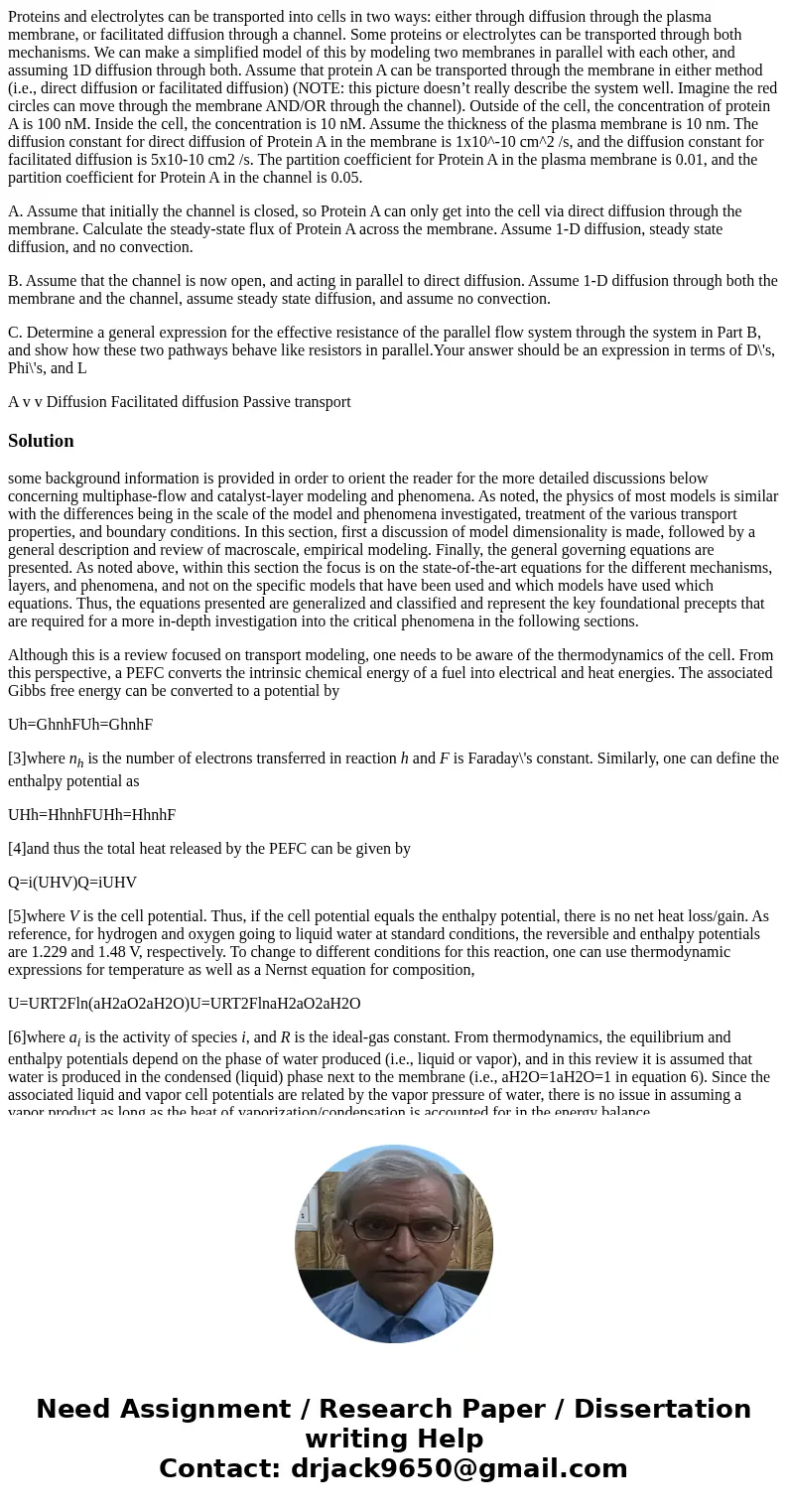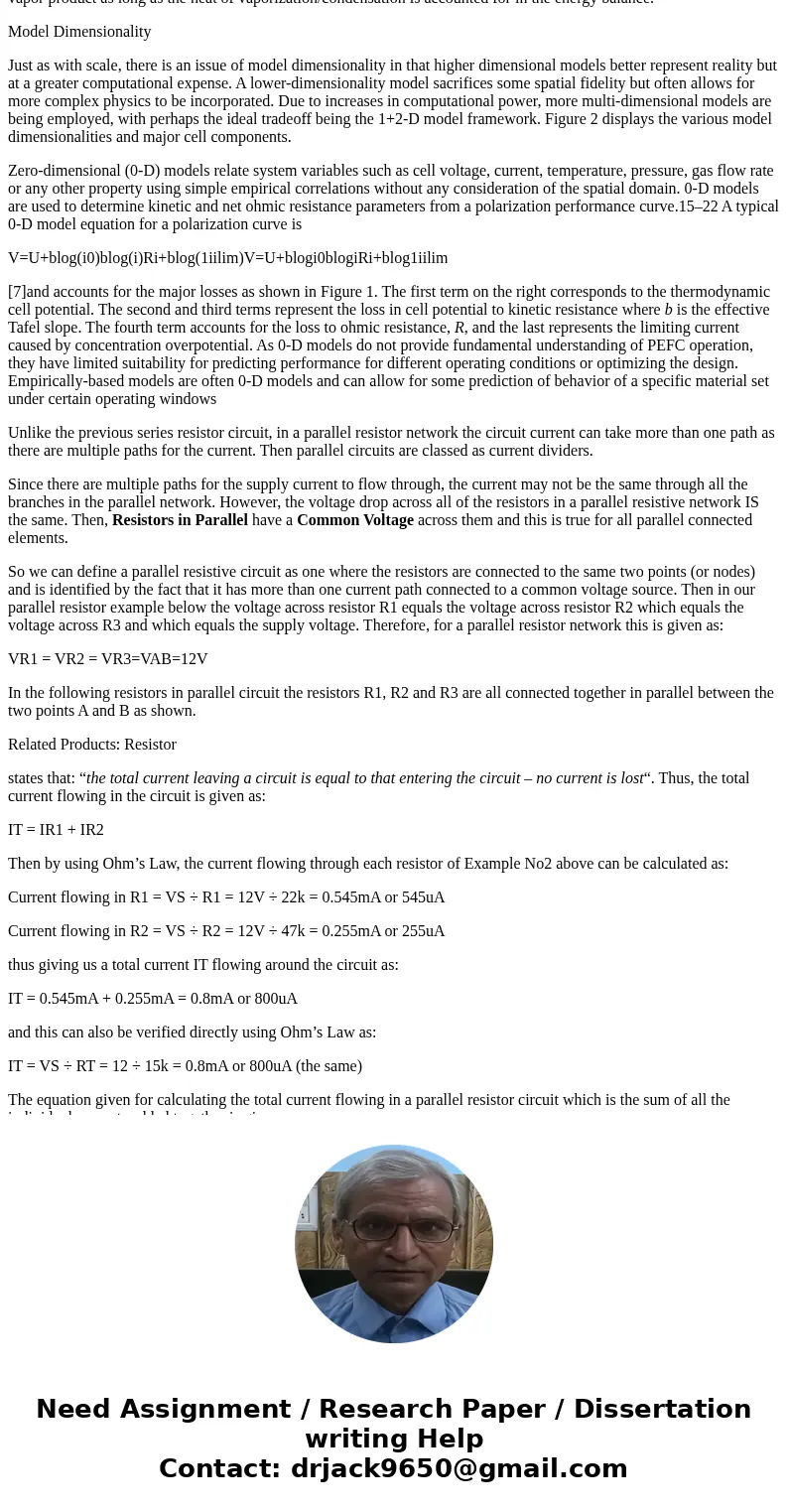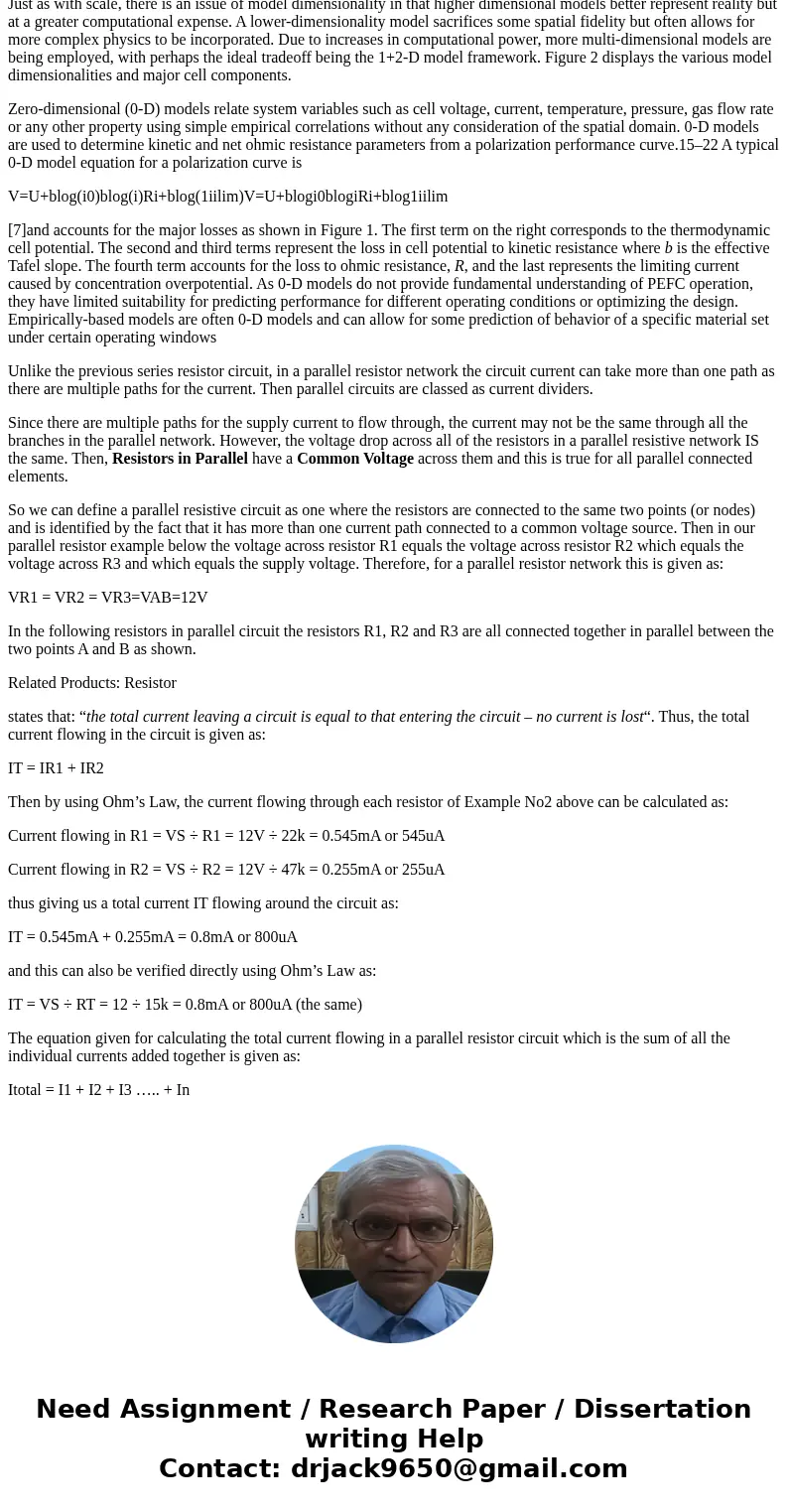Proteins and electrolytes can be transported into cells in t
Proteins and electrolytes can be transported into cells in two ways: either through diffusion through the plasma membrane, or facilitated diffusion through a channel. Some proteins or electrolytes can be transported through both mechanisms. We can make a simplified model of this by modeling two membranes in parallel with each other, and assuming 1D diffusion through both. Assume that protein A can be transported through the membrane in either method (i.e., direct diffusion or facilitated diffusion) (NOTE: this picture doesn’t really describe the system well. Imagine the red circles can move through the membrane AND/OR through the channel). Outside of the cell, the concentration of protein A is 100 nM. Inside the cell, the concentration is 10 nM. Assume the thickness of the plasma membrane is 10 nm. The diffusion constant for direct diffusion of Protein A in the membrane is 1x10^-10 cm^2 /s, and the diffusion constant for facilitated diffusion is 5x10-10 cm2 /s. The partition coefficient for Protein A in the plasma membrane is 0.01, and the partition coefficient for Protein A in the channel is 0.05.
A. Assume that initially the channel is closed, so Protein A can only get into the cell via direct diffusion through the membrane. Calculate the steady-state flux of Protein A across the membrane. Assume 1-D diffusion, steady state diffusion, and no convection.
B. Assume that the channel is now open, and acting in parallel to direct diffusion. Assume 1-D diffusion through both the membrane and the channel, assume steady state diffusion, and assume no convection.
C. Determine a general expression for the effective resistance of the parallel flow system through the system in Part B, and show how these two pathways behave like resistors in parallel.Your answer should be an expression in terms of D\'s, Phi\'s, and L
A v v Diffusion Facilitated diffusion Passive transportSolution
some background information is provided in order to orient the reader for the more detailed discussions below concerning multiphase-flow and catalyst-layer modeling and phenomena. As noted, the physics of most models is similar with the differences being in the scale of the model and phenomena investigated, treatment of the various transport properties, and boundary conditions. In this section, first a discussion of model dimensionality is made, followed by a general description and review of macroscale, empirical modeling. Finally, the general governing equations are presented. As noted above, within this section the focus is on the state-of-the-art equations for the different mechanisms, layers, and phenomena, and not on the specific models that have been used and which models have used which equations. Thus, the equations presented are generalized and classified and represent the key foundational precepts that are required for a more in-depth investigation into the critical phenomena in the following sections.
Although this is a review focused on transport modeling, one needs to be aware of the thermodynamics of the cell. From this perspective, a PEFC converts the intrinsic chemical energy of a fuel into electrical and heat energies. The associated Gibbs free energy can be converted to a potential by
Uh=GhnhFUh=GhnhF
[3]where nh is the number of electrons transferred in reaction h and F is Faraday\'s constant. Similarly, one can define the enthalpy potential as
UHh=HhnhFUHh=HhnhF
[4]and thus the total heat released by the PEFC can be given by
Q=i(UHV)Q=iUHV
[5]where V is the cell potential. Thus, if the cell potential equals the enthalpy potential, there is no net heat loss/gain. As reference, for hydrogen and oxygen going to liquid water at standard conditions, the reversible and enthalpy potentials are 1.229 and 1.48 V, respectively. To change to different conditions for this reaction, one can use thermodynamic expressions for temperature as well as a Nernst equation for composition,
U=URT2Fln(aH2aO2aH2O)U=URT2FlnaH2aO2aH2O
[6]where ai is the activity of species i, and R is the ideal-gas constant. From thermodynamics, the equilibrium and enthalpy potentials depend on the phase of water produced (i.e., liquid or vapor), and in this review it is assumed that water is produced in the condensed (liquid) phase next to the membrane (i.e., aH2O=1aH2O=1 in equation 6). Since the associated liquid and vapor cell potentials are related by the vapor pressure of water, there is no issue in assuming a vapor product as long as the heat of vaporization/condensation is accounted for in the energy balance.
Model Dimensionality
Just as with scale, there is an issue of model dimensionality in that higher dimensional models better represent reality but at a greater computational expense. A lower-dimensionality model sacrifices some spatial fidelity but often allows for more complex physics to be incorporated. Due to increases in computational power, more multi-dimensional models are being employed, with perhaps the ideal tradeoff being the 1+2-D model framework. Figure 2 displays the various model dimensionalities and major cell components.
Zero-dimensional (0-D) models relate system variables such as cell voltage, current, temperature, pressure, gas flow rate or any other property using simple empirical correlations without any consideration of the spatial domain. 0-D models are used to determine kinetic and net ohmic resistance parameters from a polarization performance curve.15–22 A typical 0-D model equation for a polarization curve is
V=U+blog(i0)blog(i)Ri+blog(1iilim)V=U+blogi0blogiRi+blog1iilim
[7]and accounts for the major losses as shown in Figure 1. The first term on the right corresponds to the thermodynamic cell potential. The second and third terms represent the loss in cell potential to kinetic resistance where b is the effective Tafel slope. The fourth term accounts for the loss to ohmic resistance, R, and the last represents the limiting current caused by concentration overpotential. As 0-D models do not provide fundamental understanding of PEFC operation, they have limited suitability for predicting performance for different operating conditions or optimizing the design. Empirically-based models are often 0-D models and can allow for some prediction of behavior of a specific material set under certain operating windows
Unlike the previous series resistor circuit, in a parallel resistor network the circuit current can take more than one path as there are multiple paths for the current. Then parallel circuits are classed as current dividers.
Since there are multiple paths for the supply current to flow through, the current may not be the same through all the branches in the parallel network. However, the voltage drop across all of the resistors in a parallel resistive network IS the same. Then, Resistors in Parallel have a Common Voltage across them and this is true for all parallel connected elements.
So we can define a parallel resistive circuit as one where the resistors are connected to the same two points (or nodes) and is identified by the fact that it has more than one current path connected to a common voltage source. Then in our parallel resistor example below the voltage across resistor R1 equals the voltage across resistor R2 which equals the voltage across R3 and which equals the supply voltage. Therefore, for a parallel resistor network this is given as:
VR1 = VR2 = VR3=VAB=12V
In the following resistors in parallel circuit the resistors R1, R2 and R3 are all connected together in parallel between the two points A and B as shown.
Related Products: Resistor
states that: “the total current leaving a circuit is equal to that entering the circuit – no current is lost“. Thus, the total current flowing in the circuit is given as:
IT = IR1 + IR2
Then by using Ohm’s Law, the current flowing through each resistor of Example No2 above can be calculated as:
Current flowing in R1 = VS ÷ R1 = 12V ÷ 22k = 0.545mA or 545uA
Current flowing in R2 = VS ÷ R2 = 12V ÷ 47k = 0.255mA or 255uA
thus giving us a total current IT flowing around the circuit as:
IT = 0.545mA + 0.255mA = 0.8mA or 800uA
and this can also be verified directly using Ohm’s Law as:
IT = VS ÷ RT = 12 ÷ 15k = 0.8mA or 800uA (the same)
The equation given for calculating the total current flowing in a parallel resistor circuit which is the sum of all the individual currents added together is given as:
Itotal = I1 + I2 + I3 ….. + In



 Homework Sourse
Homework Sourse